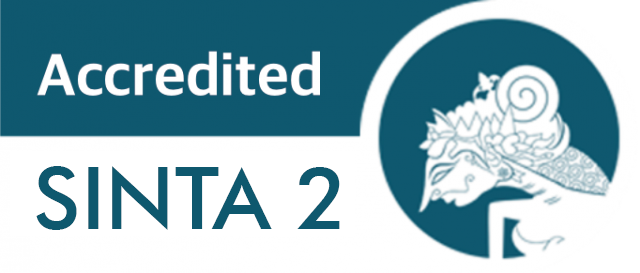Motives for Moral Behavior Among Malay Muslim Students Secondary School
DOI:
https://doi.org/10.15408/tjems.v5i1.9510Keywords:
Motive, Moral Behaviour, Malay Muslim Students, Malaysia, Motif, Perilaku Moral, Siswa Melayu MuslimAbstract
Abstract
This paper provides an overview of the motives underpinning Malay Muslim secondary school students’ moral behavior in Malaysia in their daily life. The paper is based on a qualitative case study employing purposive sampling into the motives behind Malay Muslim students’ moral behavior. The study of eight Form Four Malay Muslim students in a school in Malaysia identified six themes associated with the motives for moral behavior. The findings illustrate that Malay Muslim students have different motives for their moral behavior and that these are linked to moral reasoning. It offers an insight into what motivates Malay Muslim students who are in a family structure where religion is a strong influence of their moral behavior. It illustrates how family background, religious values and personal experiences shape the reasons for behaving morally. A key implication of the findings for Moral Education is in educating students to behave morally, teachers in particular Moral Education teachers should consider that the motivation for the action may differ based on certain aspects of the student's background that influence their beliefs about what is right and good. Teachers should also identify the prevailing motives and their influences on students’ moral behavior by facilitating reflection on their behavior and the choice the right motives in morality.
Abstrak
Penelitian ini menyajikan gambaran tentang motif yang mendasari perilaku moral siswa Melayu Muslim pada sekolah menengah di Malaysia dalam kehidupan sehari-hari mereka. Penelitian ini menggunakan metode studi kasus kualitatif dengan menggunakan tehnik purposive sampling untuk menginvestigasi motif di balik perilaku moral siswa Melayu Muslim. Delapan pola dari Empat siswa Muslim Melayu di sebuah sekolah di Malaysia teridentifikasi memiliki enam tema yang terkait dengan motif perilaku moral. Temuan mengilustrasi bahwa para siswa Melayu Muslim memiliki motif yang berbeda pada perilaku moral mereka dan bahwa ini terkait dengan penalaran moral. Temuan penelitian ini menawarkan wawasan pada apa yang memotivasi para siswa Melayu Muslim ya ng berada dalam struktur keluarga di mana agama memiliki pengaruh yang kuat pada perilaku moral mereka. Temuan penelitian ini mengilustrasi bagaimana latar belakang keluarga, nilai-nilai agama dan pengalaman pribadi dapat membentuk alasan-alasan untuk berperilaku secara moral. Implikasi utama dari temuan Pendidikan Moral ini adalah dalam mendidik siswa untuk berperilaku secara moril, para guru terutama guru Pendidikan Moral harus mempertimbangkan bahwa motivasi untuk bertindak dapat berbeda berdasarkan aspek-aspek tertentu dari latar belakang siswa yang mempengaruhi keyakinan mereka tentang apa yang benar dan baik. Para guru juga harus mengidentifikasi motif yang berlaku dan pengaruhnya pada perilaku moral siswa dengan memfasilitasi refleksi diri atas perilaku mereka dan pilihan motif yang tepat di dalam moralitas.
How to Cite : Yasina, M., Abdullah, Nur S. M., Roslan, S., Wahat, Nor W. A. (2018). Motives for Moral Behavior Among Malay Muslim Students Secondary School. TARBIYA: Journal of Education in Muslim Society, 5(1), 42-54. doi:10.15408/tjems.v5i1.9510.
References
Aroff. A. R. Md. (1999). Moral Education: Theory of Ethics and Moral Practice. Serdang: Publisher Universiti Putra Malaysia.
Aroff. A. R. Md. (1986). Introduction of Moral Education. Petaling Jaya: Fajar Bakti Publication Sdn. Bhd.
Aroff. A. R. Md. (1984). The goal of Moral Education: An Assessment Project Goal of Moral Education in Malaysia. Educator and Education Journal. Volume 6, pp. 52-60.
Andreas, P. (2007). Motivation, Moral Judgement, and the Justification of Mortality. Unpublished Doctoral Thesis. University Durham.
Suhid, A. (2009). Moral Education and Islamic Adab: Concepts and Practices. Kuala Lumpur: Utusan Publication & Distribution Sdn Bhd.
Beaumaris A. R. (2010). Moral Judgement to Moral Action: Implications for Education. Unpublished.
Bentham. J.(1789). An Introduction to The Principles of Morals and Legislation. Oxford Clarendon Press.
Blasi, A. (1984). Moral Identity: Its Role in Moral Functioning. In W.M. Kurtines & J.L. Gewirtz, Morality, Moral Behavior and Moral Development (pp. 129-139). New York, NY: Wiley Doctoral Thesis. University of Newcastle.
Carlo, G., & Randall, B.A. (2002). The Development of a Measure of Prosocial Behaviors for Late Adolescents. Journal of Youth and Adolescence, pp. 31-44.
Carlo, G., Mestre, M.V., McGinley M., Tur-Porcar A., Samper, P. & Streit C. (2013). The Structure and Correlates of a Measure of Prosocial Moral Reasoning in Adolescents from Spain. European Journal Of Development Psychology. Routledge Publications.
Mustaffa, Che Su., Rosdi, R. Mohd. (2005). Culture of Malaysian Society. Sintok: Publisher. University Utara Malaysia.
Graham, J., Meihdl, P., Beall, E., Johnson, K.M & Zhang. L. (2016). Cultural Differences in Moral Judgment and Behavior, Across and within Societies. Journal of Current Opinion in Psychology.Vol 8.
Hall . K., Brosnan, S.F (2016). A Comparative Perspective on the Evolution of Moral Behavior. In Shackelford, T.K & Hansen, R.D.The Evalution of Morality. Switzerland: Springer International Publishing.
Hoffman, M.L.(2000). Empathy and Moral Development:Implication for Caring and Justice. New York: Cambrige University Press.
Johnston, M.E. (2009). Moral Emotion Expectancies and Moral Behavior in Adolescence. Unpublished Doctoral Thesis. University of Wilfrid Laurier.
Johnston, M., & Krettenauer, T.(2011). Moral Self and Moral Emotion Expectancies as Predictors of Anti and Prosocial Behavior in Adolescence: A Case for Mediation? European Journal of Development Psychology.
Khoo, S., & Engelhorn, R., (2008). Volunteer motivations for the Malaysian Paralimpic. Journal of Tourism and Hospitality Planning & Development, volume 4, No. 3.
Kohlberg, L. (1958). The Development of Modes of Moral Thinking and Choice in the Years 10 to 16. San Francisco: Harper and Row.
Kroll J., & Egan E.(2004). Psychiatry, Moral Worry, and Moral Emotions. Journal. Psychiatry. Practice. 10:352–360.
Lacewing M., (2013), Can we be moral for self-interested reasons? Routledge, Taylor & Francis Group. cw.routledge.com/.../data /.../WhyShouldIbeMoral/Moralforselfinterest.pdf.(accessed 10 November 2013).
Lincon, Y.S., & Guba, E.G. (1985). Naturalistic Enquiry. Thousand Oaks, CA: Sage Publications Inc.
Ma, H. K. (2010). The Relation of Moral Orientation and Moral Judgement to Prosocial and Antisocial Behavior of Chinese Adolescents. International Journal of Psychology, 38:3, 101-111.
Malaysia of Education Malaysia (2012). Malaysia Education Blueprint, 2013-2025. Putrajaya: Ministry of Education Malaysia.
Malaysia of Education (2015). Standard Document of Curriculum and Assessment for Moral Education Form 1. Putrajaya: Ministry of Education Malaysia.
Yasin, M. (2015). Understanding The Practice of Moral Behavior among Form Four Malay Students in Putrajaya, Malaysia. Thesis of Unpublished Doctor of Philosophy. Serdang: University Putra Malaysia.
Merriam, S. B., & Maznah Mohammed. (2000).‘‘How Cultural Values Shape Learning in Older Adulthood: The Case of Malaysia’’. Adult Education Quarterly 51 (1): 45-63.
Matsuba, M.K., Hart, D., & Atkins, R. (2007).
Psychological and Social-Structural Influences On Commitment to Volunteering. Research in personality. vol.41, pp. 889-907.
Nietzsche, F. (1887). On the Genealogy of Morals. New York: America Syarikat. Putrajaya:
Nunner,W. (2007). Development of Moral Motivation from Childhood to Early Adulthood. Journal of Moral education. Vol.36, No 4,399-414.
Penner, L.A. (2002). Dispositional and Organizational Influences on Sustained Volunteerism: An Interactionist Perspective. Journal of Social Issues, 58, 447467. Tangney. J.P., Stuewig. J., & Mashek. D.J. (2007). Moral Emotion and Moral Behaviour. Annu. Rev. Psychol. 58:345–72.
Radzi, N. A. M., Lee, K. E., Halim, S. A., & Siwar, C. (2018). What drives them to CSR motives from the perspective of the internal and external stakeholders. International Information do CSR? another empirical study of Institute (Tokyo).
Rest, J. R. (1986). Moral Development: Advances in Research and Theory. New York, NY: Praeger.
Rest, J. (1979). Development in Judging Moral Issues. Minneapolis: University of Minnesota Press.
Rest, J. (1983). Morality. In Mussen, P. (Series ed.) and Flavell, J. H., and Markman, E.(Vol.eds.), Handbook of Child Psychology, Vol. 3: Cognitive Development. Wiley, New York, pp. 556–629.
Reynolds, S.J., & Ceranic, T., (2007). The Effects of Moral Judgement and Moral Identity on Moral Behavior; An Empirical Examination of the Moral Individual. Journal of Applied Psychology, Vol.92, No 6, 1610-1624.
Robb, William McCall (2018) An analysis of aims of eight moral-related educations, with implications for the teaching of morals. MPhil(R) thesis, University of Glasgow.
Shah, A. A. (2005). Self-Religiosity, Father's Attitude and Religious Education in the Moral Behaviour of Adolescents. Journal Psychology Developing Societies. 16:187. Sage Publications.
Singh, S. S/O Singh, U. (2004). Volunteerism Among Retirees: A Potential Resource for Community Development. Unpublished Doctoral Thesis. Serdang: University of Putra Malaysia.
Suyanto (2009). Urgensi Pendidikan Karakter.http://www.mandikdasmen.depdiknas.go.id/.
Tobias K., Sonia, S., Kayleen, W., (2015). Why be moral? Children’s explicit motives for prosocial-moral action. Journal Frontiers in Psychology.
Tangney. J.P., Stuewig. J., & Mashek. D.J. (2007). Moral Emotion and Moral Behaviour. Annu. Rev. Psychol. 58:345–72.
Vision 2020 (1991-2020). Economic Planning Unit. Prime Minister's Department. Putrajaya
William, W. (2018). Religion: what it is, how it works, and why it matters. Journal of Critical Realism,
Niu, X., Wang, X. Xiao, H. (2018). What motivates environmental leadership behaviour an empirical analysis in Taiwan. Journal of Asian Public Policy.
Yin, RK (2009). Case Study Research Design and Methods (4th ed.). Thousand Oaks, California: Sage Publications Ins.











